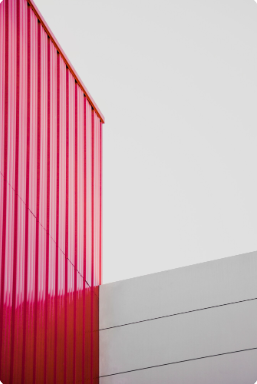RoofCont provides expert roofing, siding and contractor services, specializing in installations, repairs, and replacements for residential and commercial properties.
RoofCont provides expert roofing, siding and contractor services, specializing in installations, repairs, and replacements for residential and commercial properties.

Home exteriors need more than just curb appeal—they demand lasting protection against wind, rain, heat, and time. That’s where fiber cement siding panel gray filling steps in as a silent defender. This often-overlooked step does more than smooth surfaces; it shields your home from moisture, seals gaps, and finishes siding with a clean, seamless look.
Whether building new or repairing old panels, gray filler ensures that no crack or joint goes unprotected. It matches most siding tones, saving time on repainting and keeping exteriors looking fresh. In today’s competitive housing market, durability counts, and proper joint sealing adds serious value. Every application, from sealing corners to smoothing cracks, makes a difference.
Done right, gray filler protects your investment and preserves your home’s structural integrity. This blog addresses 15 of the most frequently asked questions people have before using grey filler on fibre cement siding. Read on to make smarter, cleaner, and longer-lasting choices for your siding project—because a solid finish starts with the right filler in the right hands
Fiber cement siding panel gray filling seals joints, repairs small cracks, and provides a uniform surface. It helps block water, pests, and dirt from entering siding seams. Because the filler matches the panel’s tone, it creates a smooth, cohesive appearance without repainting the full surface.
Many installers apply it at the end of installation to close gaps and improve panel alignment. It also acts as a barrier between moisture and the structural wall behind the siding. In high-humidity areas or locations with frequent rain, using gray filler enhances the panel’s protection and helps prevent internal damage.
While siding panels handle the bulk of weather resistance, this filler plays a key supporting role. Property owners who value strong, clean siding results rely on this gray filling as a final touch for both new installations and panel repairs.Its practical use and visual benefit make it an essential step in any fiber cement siding project.
Start by cleaning the joint with a stiff brush or dry cloth to remove dust and particles. Then load a fibre-cement-compatible grey filler into a caulking gun. Apply a steady bead directly into the gap. Smooth it using a putty knife, pressing firmly to ensure a good bond. Match the panel’s texture by feathering the edges of the filler.
Allow the product to dry fully—typically 24 hours—before sanding or painting. If the surface still appears uneven, apply a second thin layer. Ensure the filler sits flush with both panel sides. Paint afterwards only if the colour needs adjustment. Always fill gaps according to the siding manufacturer’s specified spacing guidelines.
Overfilling or ignoring recommended joint sizes causes filler to fail prematurely. Correct application improves siding lifespan and reduces future maintenance. Also, remember to apply filler in mild temperatures for better adhesion. Proper joint sealing boosts strength and keeps moisture out of the underlying wall.
Use a flexible, paintable acrylic latex caulk or cement-based patching compound labeled for exterior use. Select a product that specifically mentions compatibility with fiber cement siding. Many top-tier options contain UV stabilizers and anti-mildew additives, extending the filler’s life. A gray-tinted formula blends with most siding shades, which eliminates the need for full surface painting.
Avoid using general-purpose fillers made for wood, drywall, or interior use. These often fail when exposed to outdoor temperature shifts or direct sunlight. Fiber cement requires a product that can expand and contract as the siding responds to climate changes.
Contractors often choose brand-name fillers known for durability and weather performance. Always verify that the chosen product bonds well with cement materials and holds up through seasonal transitions. The right filler supports not just appearance but also structure. Choosing the wrong type causes early cracks or shrinkage, so product selection is critical. Stick with proven options designed for siding jobs.

Yes, but it must be the right type. Only use high-performance, paintable exterior caulk rated for cement-based products. Silicone-enhanced acrylic latex caulks work well because they stick tightly, flex naturally, and resist cracking. Choose a product with a slate or medium gray shade to match your panels closely. Before application, wipe the surface clean and dry.
Cut the caulk tube nozzle at a 45-degree angle, then apply a steady, even bead. Smooth it immediately with a gloved finger or finishing tool. Avoid using 100% silicone caulks, as they can’t be painted and often don’t bond to cement. Caulk seals minor gaps between siding boards and keeps water out. Without proper sealing, moisture enters through joints, causing siding to weaken over time.
This approach also works for filling expansion joints during installation. Using the right caulk ensures flexibility through temperature changes. Select a quality product to prevent cracking or shrinkage and maintain panel integrity.
Yes, many brands offer gray fillers that match popular cement siding tones. These pre-tinted fillers reduce the need for color-matching paint and provide a cleaner finish. Choose a shade that closely aligns with your siding, such as light gray, slate, or charcoal.
Using a filler that blends into the panels makes seams less noticeable, especially around joints or repaired areas. Look for a formula that resists UV rays and is safe for exterior use. Some brands also provide sample swatches to test before buying in bulk.
Pre-colored fillers save time and avoid multiple paint coats later. Matching filler not only looks better but also shortens installation or repair timelines. Always verify that the filler bonds well with cement-based materials and retains its color over time.
A consistent finish without visible patchwork keeps siding looking fresh longer. Choosing a filler that aligns with your panel color simplifies touch-ups and maintains aesthetic value.
With proper application, a high-quality gray filler lasts 10 years or longer. Durability depends on the product, climate conditions, and whether the filler was sealed correctly. Choose a filler made for exterior use with UV resistance and flexibility. Products that move with the panel prevent cracking or shrinking.
Once applied, regular maintenance every few years helps preserve joint integrity. Recheck filled areas for signs of gaps or color fading. When applied in clean conditions and painted properly, filler can resist moisture, wind, and sun for several seasons. Avoid skipping primer or paint, as this leaves the filler exposed.
In high-traffic or sun-heavy zones, lifespan may be slightly shorter. A good filler maintains both looks and performance, especially if installed during mild weather. Consistent sealing, painting, and inspecting help extend filler life.
Choosing long-lasting filler and applying it right the first time protects your siding investment and prevents premature joint failure.

In many cases, yes. Sanding the area helps the filler adhere better. Use medium-grit sandpaper or a sanding block to smooth rough edges, cut marks, or old paint. Be sure to remove dust or chips before applying any filler. Wipe the surface clean with a cloth after sanding.
Sanding is especially helpful when repairing damaged sections or working on weathered siding. Even on new panels, light sanding removes surface residue left from factory cutting. Avoid sanding too hard, which could weaken the surface layer.
Only rough up enough to allow for stronger bonding. Skipping this step reduces the filler’s ability to stay fixed long-term. Once sanded, the area becomes more absorbent and lets the filler grip securely.
Following this step ensures the product doesn’t lift, crack, or peel later. Even small surface prep tasks like sanding improve the overall finish. Always prepare surfaces thoroughly before applying any joint filler or patch.
Yes, and in most cases, it should be. Once gray filler dries—usually within 24 hours—apply exterior-grade paint to protect it from moisture, sun, and wind. Painting adds a layer of defense against UV rays and blends the repair with the surrounding panel. Use a breathable, cement-compatible paint in the same color as your siding.
Choose a mildew-resistant formula for better longevity. A brush works best for narrow seams, while a roller can be used for larger patches. If the filler already matches the panel tone, painting may be optional. Still, adding paint improves weather resistance. Before painting, ensure the surface is fully dry and dust-free.
Paint helps filler maintain its shape through temperature shifts and prolongs its life. For the best outcome, always follow the paint manufacturer’s instructions. A painted surface stays cleaner and is less likely to crack. Even if filler looks good unpainted, sealing it keeps it strong longer.
That depends on the filler’s quality and application process. Cheap or general-purpose fillers often crack during hot summers or freeze-thaw cycles. To prevent that, select a flexible, exterior-rated filler designed to move with the siding. Use thin, even layers to prevent shrinkage during drying. Always apply filler to clean, dry panels in proper weather conditions. Cracking typically begins at poorly filled seams or overly thick applications. Inspect joints regularly, especially after seasonal changes.
If small cracks appear, touch them up early to prevent water damage. Use a second coat only if needed, not as a base filler. Good-quality filler handles expansion and contraction without splitting. Shrinkage often indicates improper surface prep or poor adhesion.
Invest in a product that lists long-term elasticity and UV resistance. These traits help maintain shape over time and resist environmental stress. A small effort during the application leads to fewer problems later. Choose right, apply right, and your filler holds up.
Yes, as long as it’s made for exterior use. Quality gray filler resists rain, heat, cold, and humidity. Choose a product labeled “weatherproof” or “UV-resistant.” These formulas repel water, handle seasonal temperature swings, and maintain colour longer. After curing, the filler forms a durable seal that protects siding joints from weather damage.
Look for products with mildew-resistant ingredients. Some fillers also prevent fading caused by direct sun exposure. Indoor fillers will not hold up outside, so always read the label before purchase. In areas with strong storms or heavy moisture, sealing with paint after applying filler increases protection.
Regular inspection ensures that small damage doesn’t become serious. The weather resistance of filler depends not just on the brand, but also on how well it’s applied. Always apply during fair conditions. Following proper prep steps and choosing high-quality filler ensures joints stay sealed year-round.
Apply fiber cement siding panel gray filling between 50°F and 90°F. This range ensures smooth curing and strong adhesion. In cooler temperatures, filler dries too slowly and may attract moisture. In hot weather, it hardens too fast, leading to cracks or poor bonding. Apply in early morning or late afternoon to avoid direct sunlight.
Before you start, check surface temperatures, not just air temperature. Siding exposed to sunlight may be hotter than expected. Always avoid humid or rainy days. Moisture on the panel prevents filler from sticking. If possible, schedule filler work on clear, dry days. Manufacturers often list recommended application ranges—follow them exactly.
Failing to do so risks filler failure or early peeling. Even if the filler appears dry, extreme conditions reduce performance over time. Ideal temperatures improve bonding, drying speed, and long-term protection. Correct timing not only improves durability but also reduces the need for rework.
Begin by scraping out the damaged filler with a utility knife or rigid scraper. Clean the exposed area with a cloth to remove debris or loose particles. Lightly sand the edges to improve bonding. Choose a high-quality gray filler compatible with fiber cement panels. Apply a thin, even coat and press it firmly into the joint.
Smooth it with a putty knife for a flush finish. Allow the filler to dry completely—usually within 24 hours. After drying, paint the repaired spot with exterior cement-compatible paint to protect the seal. Cracks happen from poor application, weak filler quality, or harsh weather.
Early repairs prevent moisture from getting behind the siding. Regular inspections help you catch damage before it spreads. Cracked joints invite water and pests, which weaken the structure. Avoid applying filler over damaged areas without removing the old material. Proper prep and clean filling ensure the siding remains weather-tight and attractive.
While gray filler doesn’t insulate like foam or batt materials, it blocks air leaks that reduce energy efficiency. More importantly, it plays a direct role in moisture protection. When applied correctly, filler seals siding joints that would otherwise allow water into the structure. This added protection reduces the risk of rot, mold, and long-term water damage behind the panels.
It works best when paired with house wrap, flashing tape, and properly installed siding. Together, these layers form a tight building envelope. Without filler, even small gaps let air escape and water enter. Filling every seam ensures that exterior walls stay dry and sturdy.
Moisture damage not only affects energy use but also harms indoor air quality and framing. So, while it doesn’t add R-value, the filler keeps thermal layers functioning. A sealed joint system protects everything behind the siding—wood, insulation, and drywall. Use gray filler as a first line of defense in siding protection.
Yes, applying gray filler is possible as a DIY project, especially for small repairs or touch-ups. Start with the right tools: a caulking gun, putty knife, sanding sponge, gloves, and safety glasses. Clean the joints completely before applying anything. Choose an exterior-grade gray filler designed for fiber cement.
Apply a steady bead or even layer, then smooth the surface. Avoid rushing. Follow the drying time listed on the package. For better results, paint over the filled area with cement-safe exterior paint. While basic repairs are manageable, large-scale installations or complex patterns require professional skill. In those cases, improper filler work can lead to future siding damage.
However, many homeowners complete simple maintenance using gray filler successfully. Practice on a hidden section first. That builds confidence before working on visible areas. Always read the filler’s instructions carefully. When applied with care, DIY filler use saves money and keeps siding clean, sealed, and strong.
Choose a brand that offers weather-resistant, flexible, paintable filler made specifically for cement siding. Reputable names include OSI, DAP Dynaflex, and GE Max Shield. These products bond well to cement board and stand up to rain, sun, and freezing temperatures. Look for UV protection, mildew resistance, and a smooth texture that sands easily.
Most of these fillers come in pre-tinted gray tones that match common siding panels. Avoid interior or multi-purpose caulks—they often fail in outdoor conditions. Read labels carefully to ensure the filler works with cement-based materials.
Some siding manufacturers even recommend specific brands. Following those recommendations improves long-term results. If you’re unsure, buy a small tube first and test the product on a hidden panel joint.
That allows you to confirm color match and drying quality. Top-rated products maintain strength and flexibility through seasonal changes. Investing in premium filler helps avoid early cracks, moisture entry, and expensive future repairs.
Every fiber cement siding project demands strength, precision, and a weather-ready finish. That’s exactly what gray filling brings to the table. It might seem like a minor detail, but its impact is major—stopping water intrusion, locking out pests, and sealing every vulnerable joint for years of protection.
Each of the 15 questions we’ve covered proves that applying gray filler isn’t guesswork—it’s smart strategy. Choosing the right product, applying it under the correct conditions, and maintaining it properly ensures your siding performs at its peak. More importantly, it preserves both appearance and performance.
From simple DIY fixes to large-scale installations, proper gray filler application creates tighter seals and stronger siding surfaces. Skip this step, and your panels face early failure. Do it right, and your home remains protected, polished, and problem-free. In the long run, the small task of gray filling saves thousands in repairs and keeps your siding flawless. Treat your exterior with care—start with the right filler, and let your siding do the talking for years to come.
Deprecated: File Theme without comments.php is deprecated since version 3.0.0 with no alternative available. Please include a comments.php template in your theme. in /home/u737183660/domains/roofcont.com/public_html/blog/wp-includes/functions.php on line 6131